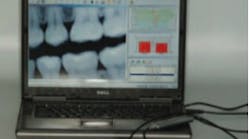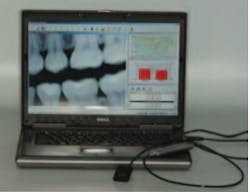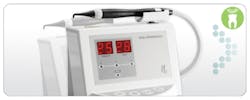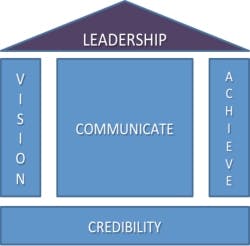Caries detection: Are you still in the dark? Leadership and light
We know that dental radiographs, analog or digital, do not show the exact extent of dental decay. As a result, we are always looking for better ways to detect dental decay. Several new systems are now available, some of which are discussed in this newsletter. They can be used to enhance radiographs. In addition to aiding us in diagnosing dental decay, these new systems can help us with patient education.In a Clinicians Report in November 2011, four systems were evaluated which detected initial carious lesions accurately in vivo with no false positives in all 75 teeth scheduled for clinical treatment.(1) They reviewed the following systems: Logicon by Carestream - Interproximal lesion detection on radiographs using grayscale analysis software(2); CarieScan PRO by CarieScan - Occlusal lesion detection by AC impedance spectroscopy(3); SoproLIFE by Acteon - Occlusal lesion detection using tooth fluorescence(4); and Spectra by Air Techniques Occlusal lesion detection using tooth and porphyrin fluorescence. The conclusion was that all four caries detection systems they evaluated performed well and better than all previous products in trials of their accuracy in real-world (versus the academic world) clinical environments. According to the report, only the Logicon detects interproximal lesions reliably and accurately. (1) The other three systems detect occlusal lesions equally reliably and accurately. They suggest that these detection devises merit consideration for routine use by clinicians to aid in carious lesion detection.(1) Prices for the above products are approximately $2000.00 - $5000.00. All four systems can provide printouts for patients, and provide accurate caries detection followed by lesion monitoring at each visit.
The International Caries Detection and Assessment System (ICDAS) developed guidelines that endeavor to standardize the diagnosis of the caries disease process on all tooth surfaces at all stages of severity.(6) ICDAS is a clinical scoring system for use in dental education, clinical practice, research, and epidemiology. ICDAS is designed to: lead to better quality information to inform decisions about appropriate diagnosis, prognosis, and clinical management at both the indivdual and public health levels. ICDAS provides a framework to support and enable personalized total caries management for improved long term health outcomes. International consensus suggests differentiation among detection of lesion extent, assessment of lesion activity and monitoring progression of the detected lesion over time.(7) The latest version of this system (ICDASII) has shown good reliability and intra/inter-examiner agreement as well as acceptable specificity and sensitivity.(8,9) This list is not all inclusive. Some other decay detection devices are: The Midwest Caries ID(10); and the DIAGNOdent.(11)
Last but not least, I want to thank all the authors that contributed to this edition of RDH eVillage FOCUS. Read Kristine Hodsdon’s article on Dental Hygiene Leadership. Leadership has been described as “a process of social influence in which one person can enlist the aid and support of others in the accomplishment of a common task".(12) We can all be leaders if we have the desire. This is especially important as we prepare for the ADHA Annual Session and Center for Lifelong Learning, and RDH Under One Roof. Happy reading!
“Management is doing things right; leadership is doing the right things.”(13)
“If your actions inspire others to dream more, learn more, do more and become more, you are a leader.”(14)
References
1. Clinicians Report, November 2011, Volume 4 Issue 11.
2. www.carestreamdental.com. Accessed May 16, 2012.
3. www.cariescan.com. Accessed May 16, 2012.
4. www.us.acteongroup.com. Accessed May 16, 2012.
5. www.airtechniques.com. Accessed May 16, 2012.
6. www.icdas.org/. Accessed May 16, 2012.
7. Pitts N. How the detection, assessment, diagnosis and monitoring of caries integrate with personalized caries management. Monogr Oral Sci. 2009; 21:1-14. Epub 2009 Jun. 3.
8. Zero DT, Fontana M, Martinez-Mier EA, et al. The biology, prevention, diagnosis and treatment of dental caries: scientific advances in the United States. J Am Dent Assoc. 2009; 140 Suppl 1:25S-34S. jada.ada.org/content/140/suppl_1/25S.full.pdf+html. Accessed May 16, 2012.
9. The International Caries Detection and Assessment System (ICDAS II). www.dundee.ac.uk/dhsru/docs/Rationale%20and%20Evidence%20ICDAS%20II%20September%2011.doc.
10. www.cariesid.com/.
11. www.kavousa.com/US/DIAGNOdent/Classic.aspx.
12. Chemers M. (1997) An integrative theory of leadership. Lawrence Erlbaum Associates, Publishers.
13. Peter F. Drucker.
14. John Quincy Adams.
Sincerely,
Maria Perno Goldie, RDH, MS
To read previous RDH eVillage FOCUS introductions by Editorial Director Maria Perno Goldie, go to introductions.










